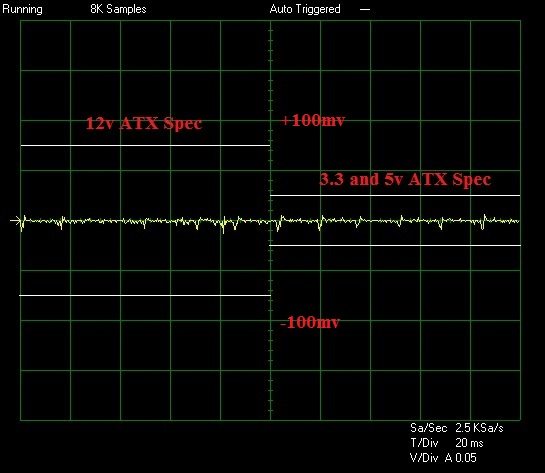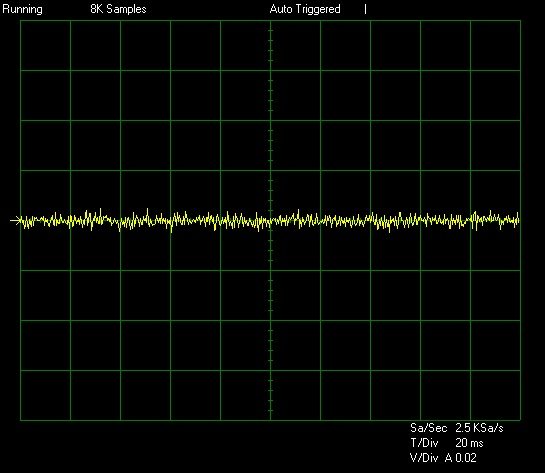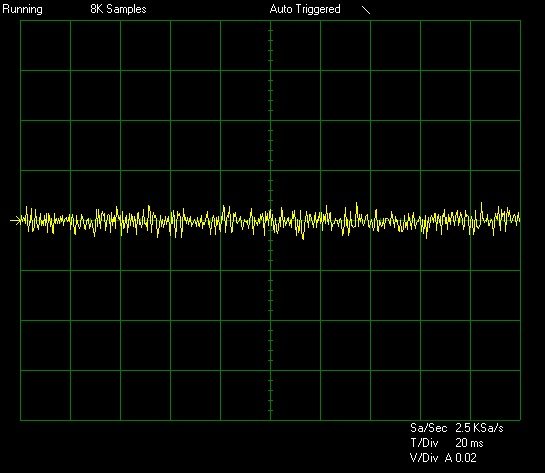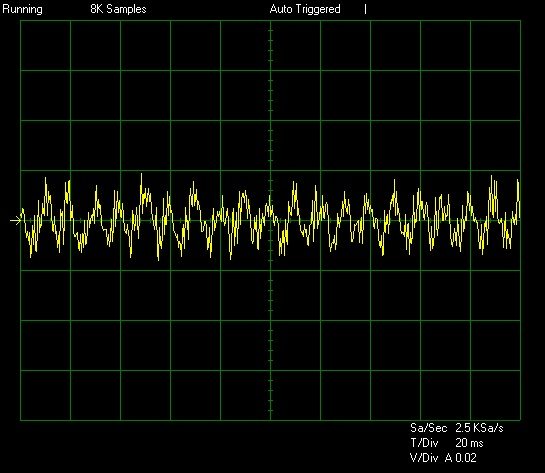Cooler Master V1200 Platinum 1200W Review
Ryan Martin / 10 years ago
Ripple
Noise and Ripple can easily be measured by an oscilloscope. These show how much voltage fluctuation there is on a particular rail. We tested the rail stability of the 3.3 volt, 5 volt and 12 volt rails using an identical time and millivolt scale for all graphs. millivolt ripple is measured by the peak to peak size of the voltage curve.

Sample Ripple Graph
The latest ATX 12 volt version 2.3 specifications state that ripple from peak to peak must be no higher than 50 millivolts for the 3.3 volt and 5 volt rails, while the 12 volt rail is allowed up to 120 millivolts peak to peak to stay within specifications. Millivolt figures are stated to the closest increment of 5 given their variability.
| Load (%) | 3.3V Ripple | 5V Ripple | 12V Ripple |
| 20 | 6 | 6.2 | 18.2 |
| 40 | 6.2 | 7 | 19.2 |
| 60 | 7.6 | 8.4 | 23.6 |
| 80 | 10.2 | 14.8 | 29.4 |
| 100 | 12.2 | 18.6 | 36.6 |
Ripple suppression meets the usual high standards we’d expect from a Seasonic-based platform. Less than 20 mV on both the 3.3 and 5 volt rails is excellent while less than 40 mV of ripple on the 12 volt rail is similarly impressive.
3.3 volt @ 100%

5 volt @ 100%

12 volt @ 100%




















